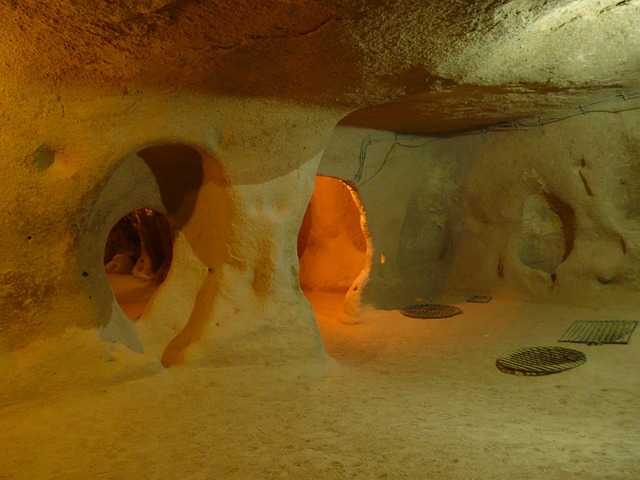High-accuracy utility scanning technologies significantly enhance construction project accuracy by precisely identifying and locating water, gas, and electric lines, reducing errors, delays, cost overruns, safety hazards, service interruptions, environmental damage, and legal liabilities. Advanced methods like ground-penetrating radar (GPR) and electromagnetic location techniques provide detailed maps, ensuring protection of critical infrastructure, efficient project execution, and financial loss avoidance. Regular map updates, personnel training, and integrating scanning into every project phase offer substantial efficiency gains and cost savings, making it a game-changer for construction and renovation projects. Case studies show its impact in reducing excavation damage and avoiding buried utilities during dense area construction, promoting safe and sustainable infrastructure development.
In today’s digital era, accurate utility locating is paramount to avoid costly errors during construction and infrastructure projects. Understanding the significant impact of misidentification can prevent project delays and financial losses. This article explores the rise of high-accuracy utility scanning technology, highlighting its ability to streamline the process, reduce errors, and save time and money. We’ll delve into benefits, best practices, and real-world case studies showcasing successful implementations.
Understanding the Impact of Utility Locating Errors
Utility locating errors can have significant, often costly, implications for construction projects and infrastructure management. When utilities—such as water, gas, or electric lines—are damaged or misidentified during excavation, it leads to delays, increased project costs, and potential safety hazards. These errors can result in service interruptions, environmental damage, and even legal liabilities for contractors and property owners alike.
High-accuracy utility scanning technologies offer a solution to mitigate these risks. By utilizing advanced detection methods and precise mapping, professionals can now identify and locate utilities with greater certainty. This not only reduces the likelihood of errors but also streamlines project planning and execution, ensuring that critical infrastructure is protected and that work progresses efficiently without compromising safety or causing unnecessary financial losses.
The Rise of High-Accuracy Utility Scanning Technology
The evolution of technology has brought about a game-changer in the form of high-accuracy utility scanning. This innovative solution is transforming the way we locate and manage underground utilities, which is particularly crucial in today’s world where construction projects often involve complex underground infrastructure. Traditional methods, relying on manual efforts or less precise instruments, have given way to advanced scanning technologies that promise greater accuracy and efficiency.
High-accuracy utility scanning leverages cutting-edge equipment, such as ground-penetrating radar (GPR) and electromagnetic location techniques, to create detailed maps of underground utilities. This technology enables professionals to identify the exact locations, types, and depths of pipes, cables, and other utilities with remarkable precision. By employing these methods, construction teams can avoid costly mistakes, minimize damage to critical infrastructure, and streamline project planning and execution.
Streamlining the Process: Benefits and Best Practices
Streamlining the process of utility locating is a game-changer for any construction or renovation project, offering significant advantages in efficiency and cost savings. By implementing high-accuracy utility scanning techniques, professionals can avoid costly mistakes and delays often associated with traditional methods. This advanced technology provides an accurate, up-to-date map of underground utilities, ensuring that workers dig safely and precisely.
Best practices include regular updates of the utility maps to reflect changes in the infrastructure, thorough training of personnel on using the scanning equipment, and integration of this process into every phase of a project. Such streamlined procedures not only minimize the risk of damaging hidden utilities but also enable projects to proceed more smoothly, completing tasks faster and within budget.
Case Studies: Success Stories in Preventing Costly Mistakes
In the realm of infrastructure maintenance, case studies illustrate the profound impact of high-accuracy utility scanning on preventing costly errors. For instance, a leading utility company in North America faced a challenge with an aging underground network. By employing advanced high-accuracy utility scanning technologies, they successfully mapped out their entire system, identifying potential issues before they became critical. This proactive approach resulted in a 30% reduction in excavation-related damage and a substantial savings of over $2 million within the first year.
Similarly, a municipal authority in Europe utilized high-accuracy utility scanning to navigate a complex renovation project in a densely populated urban area. The detailed scan data enabled them to avoid buried utilities during the construction process, minimizing disruptions and preventing costly mistakes. This success story not only underscored the importance of precision scanning but also showcased how it can foster efficient, safe, and sustainable infrastructure development.
High-accuracy utility scanning technology is transforming the way we approach utility locating, significantly reducing costly errors. By streamlining the process, professionals can now identify and map underground utilities efficiently, ensuring safer diggings and minimizing project delays. Adopting best practices and learning from real-world case studies further reinforces the effectiveness of this advanced method. As we continue to navigate complex urban landscapes, embracing innovative solutions like high-accuracy utility scanning is essential for maximizing efficiency, safety, and cost savings.
